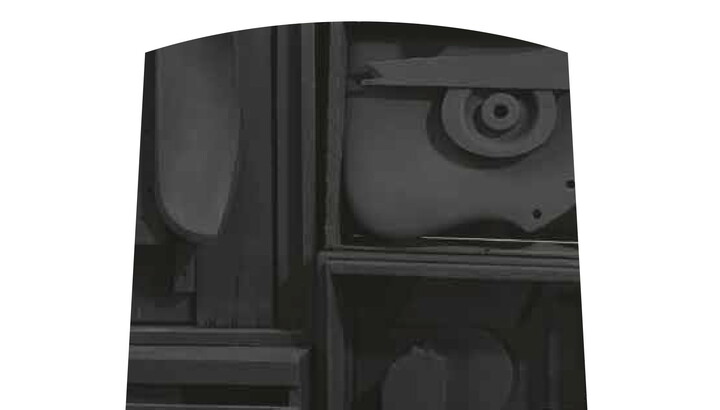


Artwork Images
Photo:
Controls
Ranchos Church, New Mexico
Object Details
-
Date
1930-1931
-
Object Type
Paintings
-
Medium
Oil on canvas
-
Dimensions
24 1/4 x 36 in.
-
Inscriptions
Verso:
signed and dated on canvas, in white paint: Georgia O'Keeffe-1930
u.l. in graphite on stretcher: Wickser 4M
u.c. in graphite on original backing board: 547 . 1:58
u.c. in graphite: Ranch church-Grey Sky 1930
u.c. in graphite on frame: O'Keefe [sic]
u.r. in graphite on stretcher: #9
c.l. in black crayon on original backing board: 26.2:39 [see file for photo of original backing board and labels]
l.l. in graphite on frame: Stieglitz's #28
l.l. in graphite on stretcher: #9 #10 #289
-
Credit Line
Amon Carter Museum of American Art, Fort Worth, Texas
-
Accession Number
1971.16
-
Copyright
Public domain
Object Description
In 1929, O’Keeffe began spending part of each year in Taos, New Mexico, a favorite destination for artists and tourists who were drawn to the region’s stark topography and its unique intermingling of Indigenous and Hispanic cultures. During her first years in Taos, she gravitated to the city’s most famous Spanish Colonial landmarks, including the San Francisco de Assisi Mission Church, which became one of her favorite subjects to paint.
O’Keeffe preferred to depict the church from the rear, a vantage point that allowed her to explore the blocky, geometric qualities of its adobe walls. Enlarging and exaggerating these forms, she portrayed the church as if it were an organic growth emerging from the earth. In turn, these compositions imbued modernist painting with a distinctly American lineage, suggesting that the foundational shapes and forms of modernism were rooted in the landscapes and buildings of the southwestern United States.
—Text taken from the Carter Handbook (2023)
Additional details
Location: On view
See more by Georgia O'Keeffe
Tags
-
How might an artist be inspired by an environment or a setting?
What makes a building a source of inspiration to an artist? To a community?
How does a building relate to its surroundings? What story does it tell about an area’s geography, history, and culture?
Why might an artist choose to abstract a scene rather than to create a more representational, or realistic, depiction?
How might artists inspire each other to depict a subject matter similarly or differently?
-
Grades 2–6
Students will create a sensory poem inspired by Ranchos Church. While looking at the work of art, they should imagine they are physically in this space and consider how they would experience the place through various senses.
- I smell ...
- I hear ...
- I feel ...
- I see ...
- I taste ...
Grades 4–8
Students will choose a building or place they find inspiring and write a brief paragraph explaining why they chose this place. They should consider their senses when expressing how it might feel to be in this place. Pose these additional questions to students so that they may consider their perspective on the building: Where are you sitting, standing? What is its size in comparison to you? What details would you emphasize?
All Levels
Activity 1
Draw your favorite place. Think of perspective, angle, distance, details, and surroundings.Activity 2
Walk around your school, your house, or a building and notice how it appears from different angles. Sketch a part of the building that you find the most interesting.
Share Educator Resources
Amon Carter Disclaimer
This information is published from the Carter's collection database. Updates and additions based on research and imaging activities are ongoing. The images, titles, and inscriptions are products of their time and are presented here as documentation, not as a reflection of the Carter’s values. If you have corrections or additional information about this object please email us to help us improve our records.
Every effort has been made to accurately determine the rights status of works and their images. Please email us if you have further information on the rights status of a work contrary or in addition to the information in our records.
Related Works
-
Zerogram, 2017
Ellen Carey
Dye coupler print
P2018.40
-
The Time Game, 2011
Jane Hammond
Gelatin silver print
P2011.29
-
Weeping Beech, Brooklyn Botanic Garden, Brooklyn, 2011
Mitch Epstein
Gelatin silver print
P2012.13
-
Untitled, 1970
Luchita Hurtado
Lithograph
1970.86
-
The Buffalo Hunt [No. 39], 1919
Charles M. Russell
Oil on canvas
1961.146
-
The Fall of the Cowboy, 1895
Frederic Remington
Oil on canvas
1961.230
-
Roseate Spoonbill, ca. 1980-85
Scott Gentling, Stuart Gentling
Graphite, opaque and transparent watercolor on paper
2018.26
-
A Dash for the Timber, 1889
Frederic Remington
Oil on canvas
1961.381
-
Self-Portrait, 1919
Stuart Davis
Oil on canvas
1975.29













